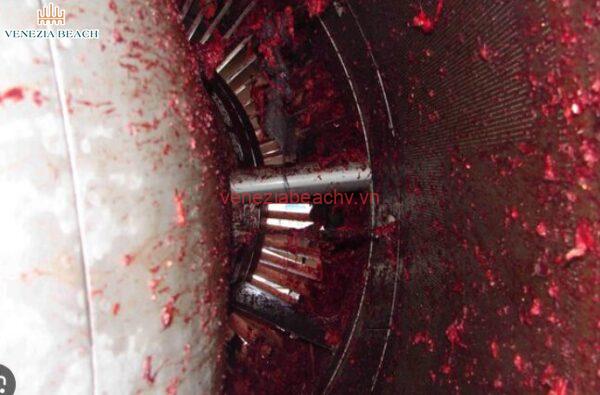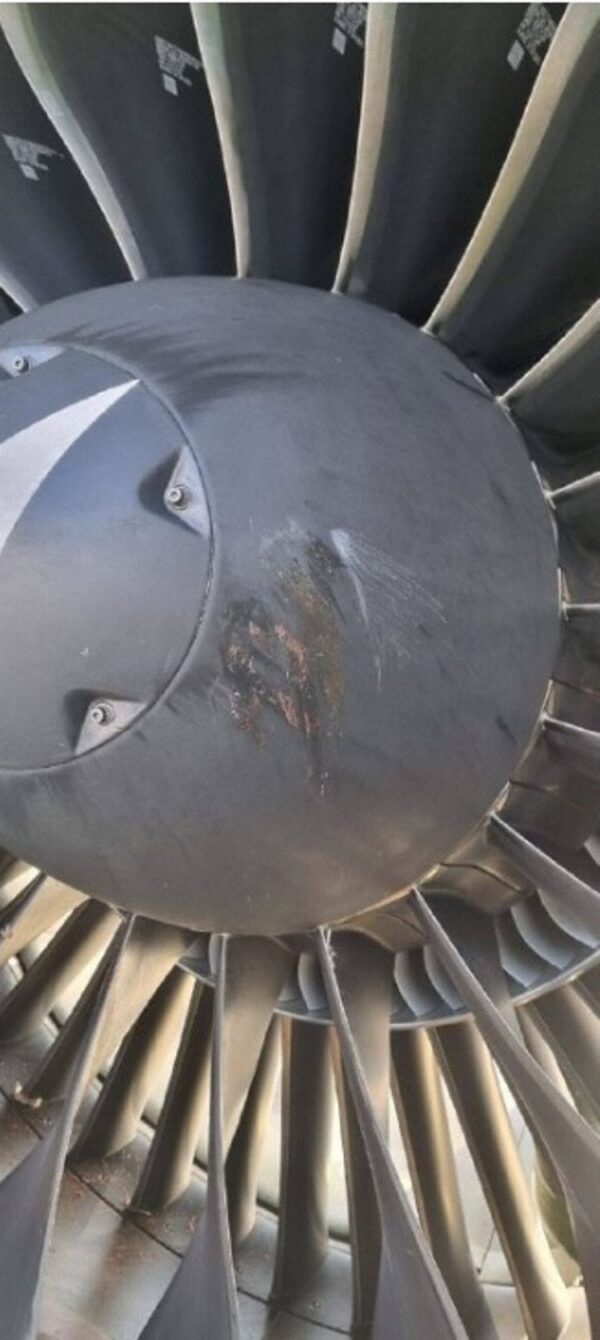The Air Astana Engine Incident: A Journey Through 2004 And 2015 Cctv

Explore the intriguing events surrounding the Air Astana engine incidents of 2004 and 2015, as we uncover the pivotal role of CCTV footage in unraveling the truth. In this article, brought to you by Hinhanhdep.vn, we delve into the details of these incidents and shed light on the implications for aviation safety. Witness the extraordinary skills displayed by the pilots in handling the crises and discover how maintenance errors led to these harrowing situations. Join us as we examine the significance of meticulous maintenance practices and robust quality assurance in ensuring the highest standards of aviation safety.

| Key Takeaways |
|---|
| Insights into the Air Astana engine incidents in 2004 and 2015 |
| Importance of CCTV footage in reconstructing events |
| Lessons learned and implications for aviation safety |
| Significance of meticulous maintenance and quality assurance |
I. Air Astana Engine Incident: A Tale of Overcoming Adversity
The Air Astana Engine Incident: A Tale of Overcoming Adversity
On that fateful day in 2015, an Embraer E190 aircraft operated by Air Astana faced a critical malfunction that put the lives of the crew and passengers at risk. Due to maintenance errors, the aileron cables were mistakenly installed in reverse, causing the plane to respond opposite to pilot inputs. This resulted in severe control issues, pushing the aircraft to its limits and requiring exceptional skill and problem-solving from the pilots.

- The crew’s quick thinking and exceptional piloting skills prevented a potential catastrophe. Despite the extreme maneuvers required to regain control of the aircraft, they managed to land safely, avoiding casualties and disaster.
- This incident not only showcased the resilience of the aircraft but also highlighted the importance of well-trained pilots who can handle crisis situations effectively.
Witnessing the pilots’ remarkable display of skill and composure in the face of adversity serves as a reminder of the rigorous training and ongoing education that pilots undergo to ensure the safety of passengers and crew members.

II. The Air Astana 2004 Incident: Lessons Learned
Investigating the Root Causes
The Air Astana 2004 incident served as a wake-up call for the aviation industry, highlighting the importance of thorough investigations into maintenance and safety procedures. The incident occurred as a result of an improper installation of critical components during routine maintenance. The control systems were compromised, leading to severe control issues during flight. This incident shed light on the need for enhanced quality control measures to prevent such mistakes from occurring in the future.
Improving Maintenance Practices
One of the key lessons learned from the Air Astana 2004 incident was the criticality of meticulous and standardized maintenance practices. It revealed that even seemingly small errors can have catastrophic consequences when it comes to aviation safety. As a result, airlines and maintenance organizations have implemented stricter protocols when it comes to inspections, installations, and routine checks. This incident prompted a reevaluation of training programs and reinforced the importance of continuous education for technicians responsible for aircraft maintenance.

| Lessons Learned from the Air Astana 2004 Incident: |
|---|
| Thorough investigations are crucial in identifying root causes |
| Meticulous and standardized maintenance practices are essential for ensuring safety |
The Air Astana 2004 incident highlighted the importance of constantly reviewing and improving maintenance practices to prevent similar mishaps. It served as a catalyst for change in the industry, leading to enhanced training programs and stricter quality control measures. By implementing these lessons learned, airlines can prioritize safety and avoid potential disasters.

III. The Air Astana 2004 Incident: Engine CCTV Video Original
Reconstructing the Event Through CCTV Footage
One of the crucial elements in understanding the Air Astana 2004 incident is the original CCTV video footage that captured the maintenance work being conducted on the aircraft. The footage provided valuable insights into the series of events leading up to the critical malfunction. It showed two technicians incorrectly connecting the aileron cables while replacing a navigation indicator, ultimately resulting in severe control issues during flight.
The Impact on Aviation Safety and Lessons Learned
The Air Astana 2004 incident highlighted significant concerns regarding global airline maintenance practices and quality control procedures. It served as a wake-up call for the aviation industry, emphasizing the need for meticulous attention to detail in every aspect of maintenance work. This incident not only underscored how a simple error can have catastrophic consequences but also brought attention to gaps in training and oversight.
IV. The Air Astana 2015 Incident: Unveiling the CCTV Footage
1. An Unexpected Discovery
When investigating the Air Astana engine incident of 2015, a remarkable discovery emerged: the existence of CCTV footage capturing the sequence of events leading up to the critical malfunction. This footage, recorded at the maintenance facility, provided invaluable insight into the actions of the technicians and shed light on the overlooked maintenance error that led to the reversal of control systems on the aircraft.
| Key Findings from the CCTV Footage |
|---|
| The moment the aileron cables were mistakenly connected in reverse |
| Technicians performing the replacement of the navigation indicator |
| The lack of initial detection of the maintenance error |
Quote:
“The CCTV footage has played a vital role in uncovering the maintenance oversight that resulted in the Air Astana engine incident. It serves as a powerful reminder of the importance of thorough inspections and adherence to maintenance protocols in ensuring the safety of aircraft and passengers.” – Aviation
2. Reconstructing the Chain of Events
With the assistance of the CCTV footage, s meticulously reconstructed the chain of events leading to the control issues faced by the crew. They were able to analyze the technicians’ actions during the replacement of the navigation indicator and pinpoint the moment when the aileron cables were mistakenly connected in reverse. This reconstruction was crucial in understanding how the maintenance error went unnoticed during subsequent checks and preparing for improved quality control measures.
- The technicians begin the replacement of the navigation indicator
- The moment the aileron cables are incorrectly connected in reverse
- Subsequent checks fail to detect the maintenance error
- The aircraft takes off and the control issues arise
3. Lessons Learned
The revelation from the CCTV footage brings to light significant lessons for the aviation industry. Firstly, it highlights the necessity of thorough and comprehensive oversight during maintenance procedures, ensuring that errors are detected and corrected at the earliest stage. Secondly, it emphasizes the importance of effective communication and collaboration among the technicians involved in the process, minimizing the risk of missteps and oversights. The Air Astana 2015 incident serves as a wake-up call for the industry, prompting a reevaluation of maintenance protocols and training programs to prevent similar incidents in the future.
Quote:
“The CCTV footage provides a valuable opportunity for the aviation industry to learn from past mistakes and enhance safety measures. By studying these incidents, we can implement changes that will safeguard the lives of passengers and maintain the integrity of the aviation system.” – Aviation Safety Specialist
4. The Impact of CCTV Footage on Aviation Safety
The availability of CCTV footage documenting the Air Astana 2015 incident represents a significant advancement in aviation safety. This visual evidence not only aids investigators in identifying the root causes of accidents but also serves as a powerful tool for educating industry professionals and raising awareness among the general public. The ability to analyze real-time events provides valuable insights that can be used to improve maintenance practices, enhance training programs, and ultimately prevent similar incidents from occurring in the future, ensuring the safety of all passengers who take to the skies.

V. The Significance of Meticulous Maintenance and Quality Assurance in Aviation Safety
The Importance of Robust Maintenance Practices
Robust maintenance practices are crucial in ensuring the safe operation of aircraft. The Air Astana engine incidents in 2004 and 2015 highlight the dire consequences that can arise from even the slightest maintenance oversight. In both cases, the incorrect installation of aileron cables led to severe control issues, risking the lives of passengers and crew. These incidents serve as a stark reminder that every aspect of maintenance must be meticulously executed to guarantee the integrity of crucial systems.
“The incorrect installation of aileron cables led to severe control issues, risking the lives of passengers and crew.”
The Role of Quality Assurance in Aviation Safety
Quality assurance plays a fundamental role in upholding the highest standards of aviation safety. Adequate checks and balances within the maintenance process are essential to identify and rectify potential errors before they become critical issues. In the case of the Air Astana incidents, the maintenance oversight went unnoticed during subsequent checks, highlighting the need for a robust quality assurance framework that leaves no room for oversight.
- Meticulous inspection protocols
- Thorough documentation of maintenance procedures
- Regular staff training and competency assessments
Lessons Learned and Industry Implications
The Air Astana engine incidents serve as valuable lessons for the aviation industry at large. These incidents exposed vulnerabilities in maintenance procedures and quality control, emphasizing the critical need for ongoing improvement. Airlines worldwide must learn from these incidents and implement stricter maintenance protocols and quality assurance measures to prevent similar mishaps. By prioritizing meticulous maintenance practices, the industry can enhance passenger safety and uphold the highest standards of aviation excellence.


VI. Conclusion
The Air Astana engine incidents in 2004 and 2015 serve as stark reminders of the importance of meticulous maintenance practices and robust quality assurance in the aviation industry. The revelation of CCTV footage provided invaluable insights into the events, enabling a deeper understanding of what led to these incidents. Through the analysis of these incidents, we have learned valuable lessons about the need for thorough checks and diligent maintenance procedures. It highlights the critical role that skilled pilots, resilient aircraft, and effective problem-solving play in averting potential disasters. By continually prioritizing safety measures and implementing comprehensive quality control procedures, the aviation industry can ensure the well-being of passengers and maintain the highest standards of safety.





